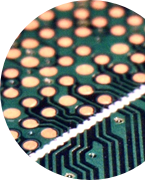There are several lead-free surface finishing options for printed circuit boards (PCBs) that are alternative to the traditional lead-tin solder. These include:
- ENIG (Electroless Nickel Immersion Gold): This is a popular lead-free surface finishing option that provides excellent corrosion resistance, solderability, and gold wire bonding. It is RoHS compliant and does not contain lead, making it a good choice for applications where lead-free soldering is required. However, it can be more expensive than other options, and the process of immersing the PCB in gold can be more complex than other methods.
- OSP (Organic Solderability Preservatives): This is a cost-effective lead-free surface finishing option that is easy to apply and provides good solderability. However, it is not as corrosion-resistant as other options and may require re-application if the PCB is exposed to harsh environments.
- HASL (Hot Air Solder Leveling): This is a common lead-free surface finishing option that is less expensive than ENIG, but it does not provide as good of a surface for soldering and may not be as corrosion-resistant.
- Immersion Silver/Tin: These are cost-effective and easy to apply, but they may not be as corrosion-resistant as other options and may require re-application if the PCB is exposed to harsh environments.
- Immersion Tin: This surface finish is also cost-effective, easy to apply and provides good solderability and corrosion resistance. However, it may not be suitable for high temperature and high humidity environments.
When choosing a lead-free surface finishing option, it is important to consider factors such as cost, corrosion resistance, solderability, and compatibility with the intended application and environment. Additionally, some of the options may have limitations for high-reliability or high-performance applications

